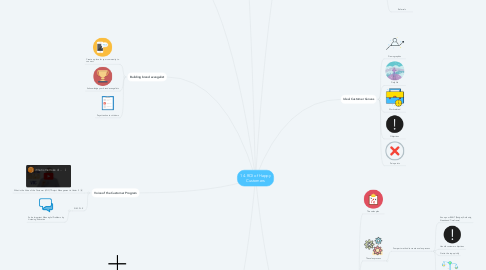
1. Sales Channel elements
1.1. Direct sales
1.2. Landing pages
1.3. E-Commerce
1.4. Retail
2. Different types of salespeople
2.1. Maverick
2.1.1. Work well in early-stage companies, they know how to put the big wins on the board
2.1.2. Bad at following rules, bad at process and they are chaotic
2.2. Journeyman
2.2.1. Hugely process driven, organized and methodical, know how to walk a deal
2.2.2. Don't tend to make great heads of sales departments and aren't the people you want early in your company
2.3. Superstar
2.3.1. They have it all: an innate ability to sell, a desire for structure, focused on process and can work well with leverage
2.3.2. Are the worst first hires in a startup
2.4. Trouble
2.4.1. Aren't process driven, don't have the innate ability to sell and are a bad hire
3. Voice of the Customer Program
3.1. What is the Voice of the Customer (VOC)? Project Management in Under 5
3.2. S.I.M.P.L.E
3.2.1. Solve Important Meaningful Problems by Listening Education
4. Building brand evangelist
4.1. Create a place for your community to connect
4.2. Acknowledge your brand evangelists
4.3. Pay attention to criticisms
5. Loyalty Programs
5.1. Keep it elite
5.2. Provide membership cards or numbers
5.3. Regularly communicate
6. The Get-Keep-Grow Approach
6.1. Get customers
6.1.1. Pipeline building
6.1.1.1. Sales software, CRM and pipeline management
6.1.2. Trust selling
6.1.2.1. Word of mouth, public speaking at conferences, customer referrals, training events and demos
6.1.3. Targeted selling
6.1.4. Sales targets
6.2. Keep customers
6.2.1. Communications
6.2.2. Events
6.2.3. Programs
6.2.3.1. Loyalty programs
6.3. Grow customers
6.3.1. Up/Next/Cross sell
6.3.2. Referrals
7. Ideal Customer Canvas
7.1. Demographics
7.2. Daily life
7.3. Work-related
7.4. Objections
7.5. Pain points
8. Finding the sales process that is right for you
8.1. The sales plan
8.2. The sales process
8.2.1. Four-part method to create a sales process
8.2.1.1. Know your BANT (Budget, Authority, Needs and Timeframe)
8.2.1.2. Handle customer objections
8.2.1.3. Get to the top quickly
8.2.1.4. Prioritize without mercy
8.3. The sales methodology
8.3.1. PUCCKA
8.3.1.1. How to Develop a Sales Methodology
8.4. Using sales campaigns
8.4.1. Sales Campaign elements
8.4.1.1. Bundling
8.4.1.2. Test trial
8.4.1.3. Upselling
8.4.1.4. Promotions
8.4.1.5. Samples
8.4.1.6. Inside sales
8.4.1.7. A/B testing
